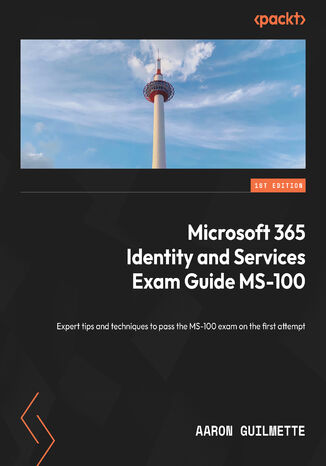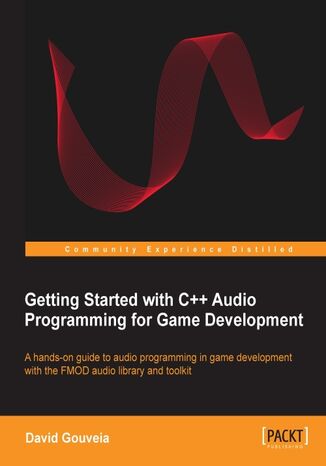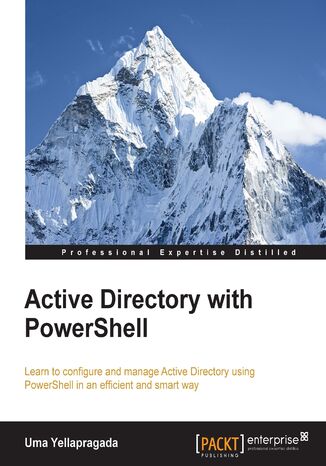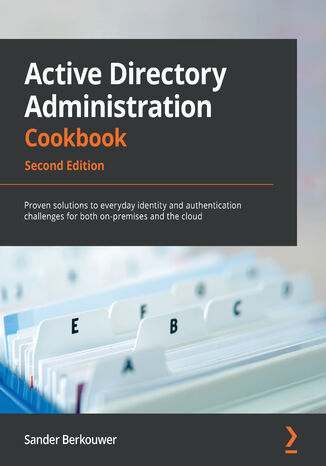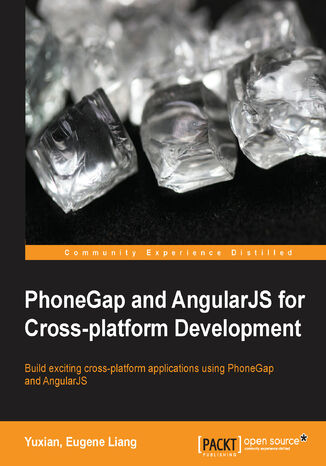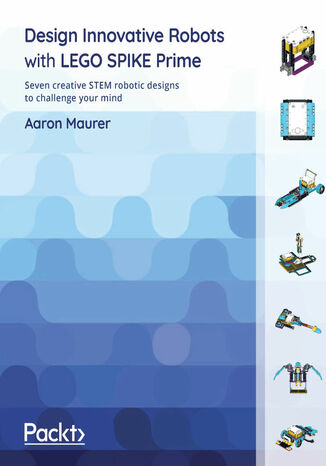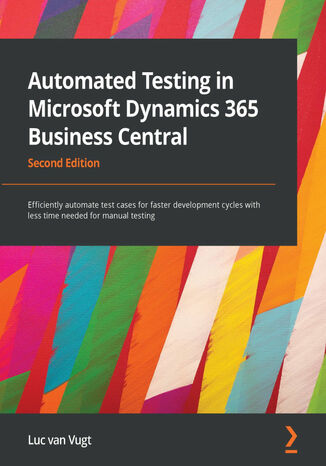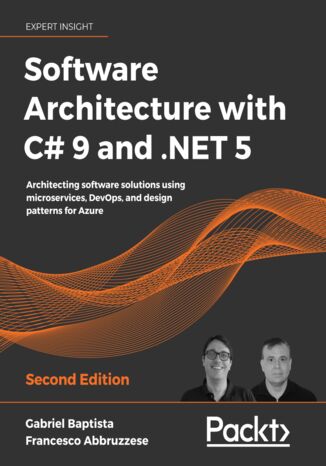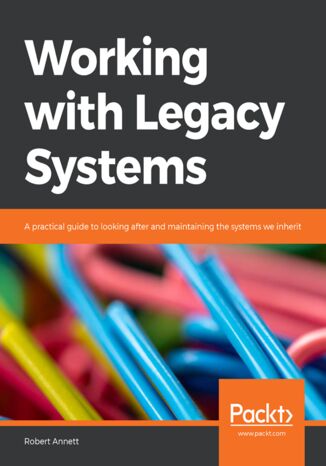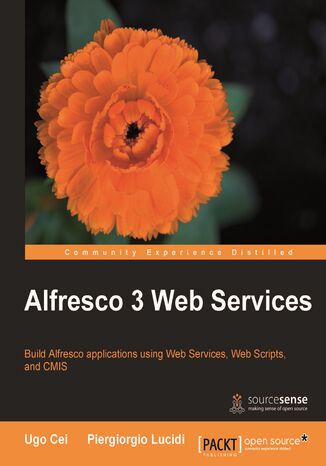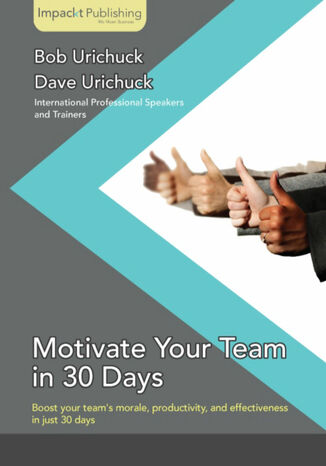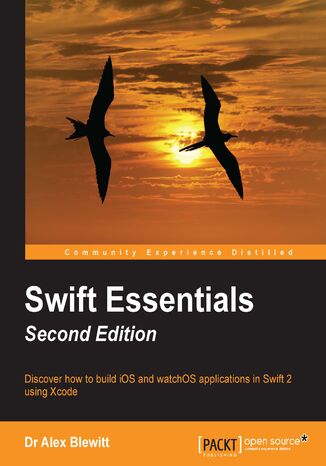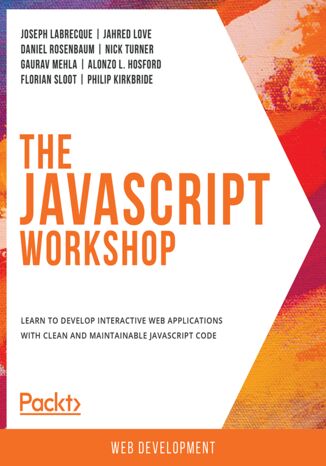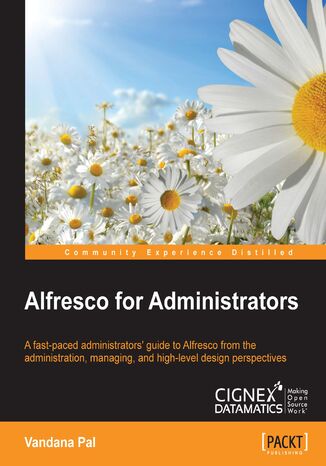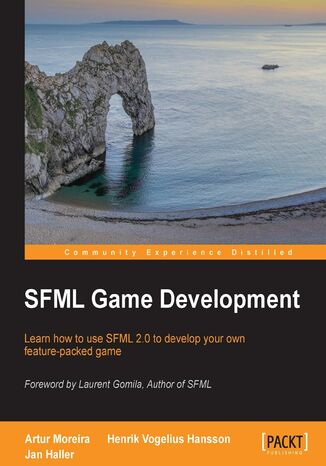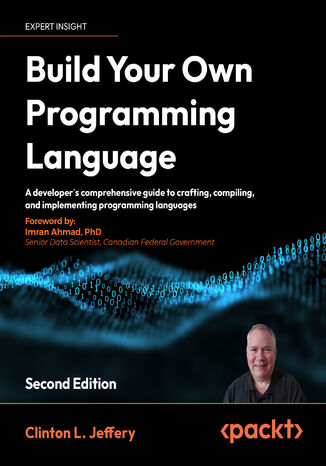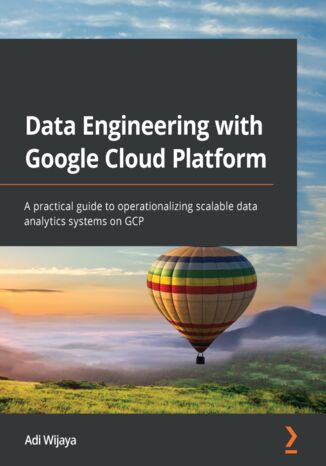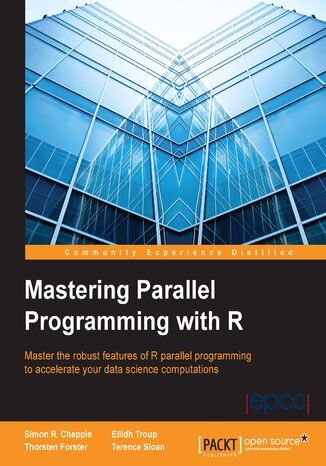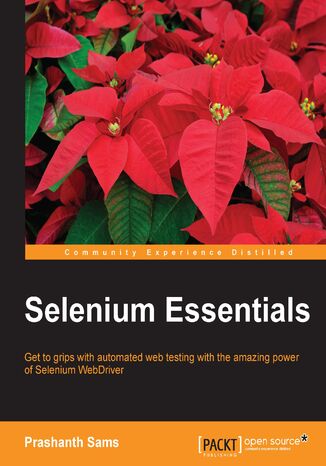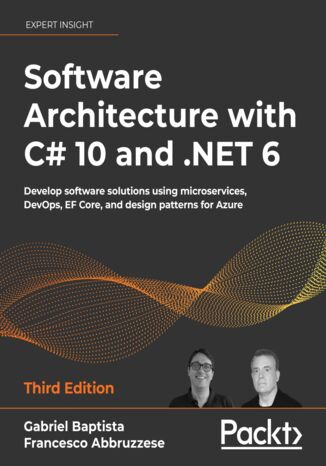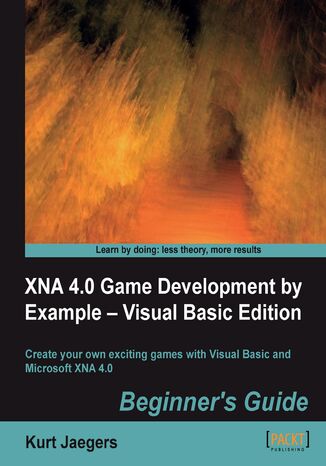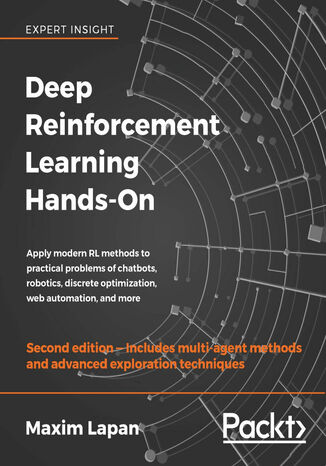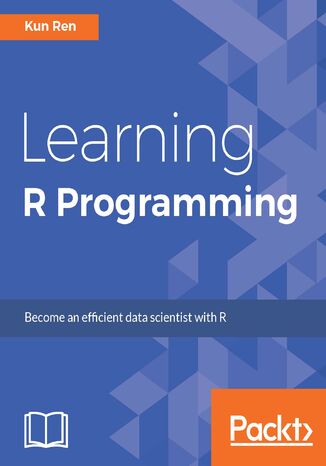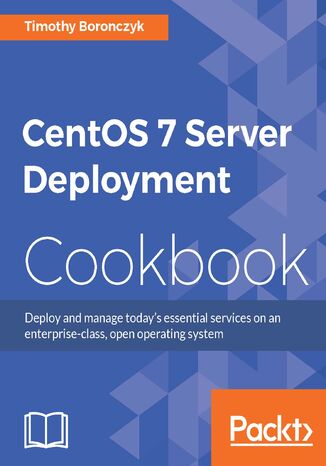Categories
Ebooks
-
Business and economy
- Bitcoin
- Businesswoman
- Coaching
- Controlling
- E-business
- Economy
- Finances
- Stocks and investments
- Personal competence
- Computer in the office
- Communication and negotiation
- Small company
- Marketing
- Motivation
- Multimedia trainings
- Real estate
- Persuasion and NLP
- Taxes
- Social policy
- Guides
- Presentations
- Leadership
- Public Relation
- Reports, analyses
- Secret
- Social Media
- Sales
- Start-up
- Your career
- Management
- Project management
- Human Resources
-
For children
-
For youth
-
Education
-
Encyclopedias, dictionaries
-
E-press
- Architektura i wnętrza
- Health and Safety
- Biznes i Ekonomia
- Home and garden
- E-business
- Ekonomia i finanse
- Esoterecism
- Finances
- Personal finance
- Business
- Photography
- Computer science
- HR & Payroll
- For women
- Computers, Excel
- Accounts
- Culture and literature
- Scientific and academic
- Environmental protection
- Opinion-forming
- Education
- Taxes
- Travelling
- Psychology
- Religion
- Agriculture
- Book and press market
- Transport and Spedition
- Healthand beauty
-
History
-
Computer science
- Office applications
- Data bases
- Bioinformatics
- IT business
- CAD/CAM
- Digital Lifestyle
- DTP
- Electronics
- Digital photography
- Computer graphics
- Games
- Hacking
- Hardware
- IT w ekonomii
- Scientific software package
- School textbooks
- Computer basics
- Programming
- Mobile programming
- Internet servers
- Computer networks
- Start-up
- Operational systems
- Artificial intelligence
- Technology for children
- Webmastering
-
Other
-
Foreign languages
-
Culture and art
-
School reading books
-
Literature
- Antology
- Ballade
- Biographies and autobiographies
- For adults
- Dramas
- Diaries, memoirs, letters
- Epic, epopee
- Essay
- Fantasy and science fiction
- Feuilletons
- Work of fiction
- Humour and satire
- Other
- Classical
- Crime fiction
- Non-fiction
- Fiction
- Mity i legendy
- Nobelists
- Novellas
- Moral
- Okultyzm i magia
- Short stories
- Memoirs
- Travelling
- Narrative poetry
- Poetry
- Politics
- Popular science
- Novel
- Historical novel
- Prose
- Adventure
- Journalism, publicism
- Reportage novels
- Romans i literatura obyczajowa
- Sensational
- Thriller, Horror
- Interviews and memoirs
-
Natural sciences
-
Social sciences
-
School textbooks
-
Popular science and academic
- Archeology
- Bibliotekoznawstwo
- Cinema studies
- Philology
- Polish philology
- Philosophy
- Finanse i bankowość
- Geography
- Economy
- Trade. World economy
- History and archeology
- History of art and architecture
- Cultural studies
- Linguistics
- Literary studies
- Logistics
- Maths
- Medicine
- Humanities
- Pedagogy
- Educational aids
- Popular science
- Other
- Psychology
- Sociology
- Theatre studies
- Theology
- Economic theories and teachings
- Transport i spedycja
- Physical education
- Zarządzanie i marketing
-
Guides
-
Game guides
-
Professional and specialist guides
-
Law
- Health and Safety
- History
- Road Code. Driving license
- Law studies
- Healthcare
- General. Compendium of knowledge
- Academic textbooks
- Other
- Construction and local law
- Civil law
- Financial law
- Economic law
- Economic and trade law
- Criminal law
- Criminal law. Criminal offenses. Criminology
- International law
- International law
- Health care law
- Educational law
- Tax law
- Labor and social security law
- Public, constitutional and administrative law
- Family and Guardianship Code
- agricultural law
- Social law, labour law
- European Union law
- Industry
- Agricultural and environmental
- Dictionaries and encyclopedia
- Public procurement
- Management
-
Tourist guides and travel
- Africa
- Albums
- Southern America
- North and Central America
- Australia, New Zealand, Oceania
- Austria
- Asia
- Balkans
- Middle East
- Bulgary
- China
- Croatia
- The Czech Republic
- Denmark
- Egipt
- Estonia
- Europe
- France
- Mountains
- Greece
- Spain
- Holand
- Iceland
- Lithuania
- Latvia
- Mapy, Plany miast, Atlasy
- Mini travel guides
- Germany
- Norway
- Active travelling
- Poland
- Portugal
- Other
- Przewodniki po hotelach i restauracjach
- Russia
- Romania
- Slovakia
- Slovenia
- Switzerland
- Sweden
- World
- Turkey
- Ukraine
- Hungary
- Great Britain
- Italy
-
Psychology
- Philosophy of life
- Kompetencje psychospołeczne
- Interpersonal communication
- Mindfulness
- General
- Persuasion and NLP
- Academic psychology
- Psychology of soul and mind
- Work psychology
- Relacje i związki
- Parenting and children psychology
- Problem solving
- Intellectual growth
- Secret
- Sexapeal
- Seduction
- Appearance and image
- Philosophy of life
-
Religion
-
Sport, fitness, diets
-
Technology and mechanics
Audiobooks
-
Business and economy
- Bitcoin
- Businesswoman
- Coaching
- Controlling
- E-business
- Economy
- Finances
- Stocks and investments
- Personal competence
- Communication and negotiation
- Small company
- Marketing
- Motivation
- Real estate
- Persuasion and NLP
- Taxes
- Social policy
- Guides
- Presentations
- Leadership
- Public Relation
- Secret
- Social Media
- Sales
- Start-up
- Your career
- Management
- Project management
- Human Resources
-
For children
-
For youth
-
Education
-
Encyclopedias, dictionaries
-
E-press
-
History
-
Computer science
-
Other
-
Foreign languages
-
Culture and art
-
School reading books
-
Literature
- Antology
- Ballade
- Biographies and autobiographies
- For adults
- Dramas
- Diaries, memoirs, letters
- Epic, epopee
- Essay
- Fantasy and science fiction
- Feuilletons
- Work of fiction
- Humour and satire
- Other
- Classical
- Crime fiction
- Non-fiction
- Fiction
- Mity i legendy
- Nobelists
- Novellas
- Moral
- Okultyzm i magia
- Short stories
- Memoirs
- Travelling
- Poetry
- Politics
- Popular science
- Novel
- Historical novel
- Prose
- Adventure
- Journalism, publicism
- Reportage novels
- Romans i literatura obyczajowa
- Sensational
- Thriller, Horror
- Interviews and memoirs
-
Natural sciences
-
Social sciences
-
Popular science and academic
-
Guides
-
Professional and specialist guides
-
Law
-
Tourist guides and travel
-
Psychology
- Philosophy of life
- Interpersonal communication
- Mindfulness
- General
- Persuasion and NLP
- Academic psychology
- Psychology of soul and mind
- Work psychology
- Relacje i związki
- Parenting and children psychology
- Problem solving
- Intellectual growth
- Secret
- Sexapeal
- Seduction
- Appearance and image
- Philosophy of life
-
Religion
-
Sport, fitness, diets
-
Technology and mechanics
Videocourses
-
Data bases
-
Big Data
-
Biznes, ekonomia i marketing
-
Cybersecurity
-
Data Science
-
DevOps
-
For children
-
Electronics
-
Graphics/Video/CAX
-
Games
-
Microsoft Office
-
Development tools
-
Programming
-
Personal growth
-
Computer networks
-
Operational systems
-
Software testing
-
Mobile devices
-
UX/UI
-
Web development
-
Management
Podcasts
This book serves as a comprehensive guide to prepare you for the Microsoft Identity and Services exam, which focuses on the core identity and security aspects of a Microsoft 365 tenant. The exam MS-100 tests your proficiency in Azure AD authentication types, user management roles, access management, and workload applications.This book follows the published MS-100 blueprint, which covers identity and identity synchronization concepts, administrative roles, and crucial security topics such as self-service password reset, Azure AD password protection, and multifactor authentication. You’ll gain insights into application and authentication concepts, including OAuth application request management, enterprise application configuration, the benefits of Azure AD Application Proxy, and deploying Microsoft 365 apps.The book also delves into passwordless sign-in methods and provides overviews of configuring Exchange Online, Microsoft Teams, SharePoint Online, and OneDrive for Business in both cloud-only and hybrid deployments. You’ll be able to assess your knowledge retention at the end of each chapter.By the end of this MS-100 study guide, you’ll have built the knowledge and skills to pass the MS-100 exam and be able to ensure thorough preparation with the help of practice exam questions.
David Gouveia, David da L Gouveia
Audio plays a fundamental role in video games. From music to sound effects or dialogue, it helps to reinforce the experience, convey the mood, and give feedback to the player. Presently, many games have achieved commercial success by incorporating game sounds that have enhanced the user experience. You can achieve this in your games with the help of the FMOD library. This book provides you with a practical guide to implementing the FMOD toolkit in your games.Getting Started with C++ Audio Programming for Game Developers is a quick and practical introduction to the most important audio programming topics that any game developer is expected to know. Whether you need to play only a few audio files or you intend to design a complex audio simulation, this book will help you get started enhancing your game with audio programs.Getting Started with C++ Audio Programming for Game Developers covers a broad range of topics – from loading and playing audio files to simulating sounds within a virtual environment and implementing interactive sounds that react to events in the game.The book starts off with an explanation of the fundamental audio concepts, after which it proceeds to explain how to use the FMOD Ex library, how to implement a 3D audio simulation, how to use the FMOD Designer toolkit, and how best to work with multi-layered sounds with complex behaviors attached to them. The final part of the book deals with working with audio at a much lower level by manipulating audio data directly.This book will provide you with a good foundation so that you can successfully implement audio into your games and begin pursuing other advanced topics in audio programming with confidence.
Updated to the Windows Server 2022, this second edition covers effective recipes for Active Directory administration that will help you leverage AD's capabilities for automating network, security, and access management tasks in the Windows infrastructure.Starting with a detailed focus on forests, domains, trusts, schemas, and partitions, this book will help you manage domain controllers, organizational units, and default containers. You'll then explore Active Directory sites management as well as identify and solve replication problems. As you progress, you'll work through recipes that show you how to manage your AD domains as well as user and group objects and computer accounts, expiring group memberships, and Group Managed Service Accounts (gMSAs) with PowerShell. Once you've covered DNS and certificates, you'll work with Group Policy and then focus on federation and security before advancing to Azure Active Directory and how to integrate on-premise Active Directory with Azure AD. Finally, you'll discover how Microsoft Azure AD Connect synchronization works and how to harden Azure AD.By the end of this AD book, you’ll be able to make the most of Active Directory and Azure AD Connect.
PhoneGap is a mobile development framework that allows developers to build cross-platform mobile applications. Building PhoneGap apps is traditionally done using HTML, CSS, jQuery Mobile, Eclipse Editor, and/or Xcode. The process can be cumbersome, from setting up your editor to optimizing your usage of jQuery, and so on. However, AngularJS, a new but highly popular JavaScript framework, eases these tasks with APIs to get access to mobile APIs such as notifications, geo-location, accelerometers, and more. Starting with the absolute basics of building an AngularJS application, this book will teach you how to quickly set up PhoneGap apps using the command-line interface.You will learn how to create simple to advanced to-do lists and add authentication capabilities using PhoneGap's plugins. You will enhance your skills by writing a PhoneGap app using your newly learned AngularJS skills. Furthermore, you will learn about adding animation and interactive designs to your mobile web apps using PhoneGap plugins. By the end of the book, you will know everything you need to launch your app on both Android and iOS devices.
The new LEGO SPIKE Prime is one of the latest additions to the LEGO robotics line of products. This book will help you to enjoy building robots and understand how exciting robotics can be in terms of design, coding, and the expression of ideas.The book begins by taking you through a new realm of playful learning experiences designed for inventors and creators of any age. In each chapter, you'll find out how to build a creative robot, learn to bring the robot to life through code, and finally work with exercises to test what you've learned and remix the robot to suit your own unique style. Throughout the chapters, you'll build exciting new smart robots such as a handheld game, a robotic arm with a joystick, a guitar, a flying bird, a sumobot, a dragster, and a Simon Says game.By the end of this LEGO book, you'll have gained the knowledge and skills you need to build any robot that you can imagine.
Dynamics 365 Business Central is a cloud-based SaaS ERP proposition from Microsoft. With development practices becoming more formal, implementing changes or new features is not as simple as it used to be back when Dynamics 365 Business Central was called Navigator, Navision Financials, or Microsoft Business Solutions-Navision, and the call for test automation is increasing.This book will show you how to leverage the testing tools available in Dynamics 365 Business Central to perform automated testing. Starting with a quick introduction to automated testing and test-driven development (TDD), you'll get an overview of test automation in Dynamics 365 Business Central. You'll then learn how to design and build automated tests and explore methods to progress from requirements to application and testing code. Next, you'll find out how you can incorporate your own as well as Microsoft tests into your development practice. With the addition of three new chapters, this second edition covers in detail how to construct complex scenarios, write testable code, and test processes with incoming and outgoing calls.By the end of this book, you'll be able to write your own automated tests for Microsoft Business Central.
Gabriel Baptista, Francesco Abbruzzese
Software architecture is the practice of implementing structures and systems that streamline the software development process and improve the quality of an app. This fully revised and expanded second edition, featuring the latest features of .NET 5 and C# 9, enables you to acquire the key skills, knowledge, and best practices required to become an effective software architect.This second edition features additional explanation of the principles of Software architecture, including new chapters on Azure Service Fabric, Kubernetes, and Blazor. It also includes more discussion on security, microservices, and DevOps, including GitHub deployments for the software development cycle.You will begin by understanding how to transform user requirements into architectural needs and exploring the differences between functional and non-functional requirements. Next, you will explore how to carefully choose a cloud solution for your infrastructure, along with the factors that will help you manage your app in a cloud-based environment.Finally, you will discover software design patterns and various software approaches that will allow you to solve common problems faced during development.By the end of this book, you will be able to build and deliver highly scalable enterprise-ready apps that meet your organization’s business requirements.
The IT industry is constantly evolving with the introduction of new technologies. While it is important to keep up with advancements, maintaining legacy systems is equally necessary to ensure that the infrastructure of your organization functions to the best of its ability. Sound knowledge of techniques that can be used for maintaining legacy systems can help you avoid common pitfalls.The book begins with a quick overview of what a real legacy system looks like, how it works, and common issues that may be faced when trying to maintaining it. You'll then explore the architecture of a legacy system in detail and understand each of its components. As you progress, you'll discover a variety of techniques for analyzing a legacy system and how to apply them. Once you get to grips with the security constraints associated with legacy systems, you'll explore ways to secure them. Finally, you'll be able to easily make changes in legacy systems to enhance their performance.By the end of this book, you’ll have developed the skills and confidence to work with legacy systems and efficiently maintain them.
Alfresco 3 Web Services. Build Alfresco applications using Web Services, WebScripts and CMIS
Alfresco.com, Piergiorgio Lucidi, Ugo Cei
Alfresco 3 is the leading open source enterprise content management system that offers powerful features for interacting with the content in its repository from outside the system. These include the support for the Content Management Interoperability Services (CMIS) implementation, reusable web scripts, and a Web Services API.This is the first book to show you how to use Web Services in Alfresco. Packed with examples, you'll learn how to build applications using Alfresco remote APIs based on SOAP and REST. You'll see how to use different APIs and bindings such as WebServices, WebScripts, and CMIS.Alfresco 3 Web Services starts off by showing you the services exposed by the Alfresco Web Services API, and how the API fits into the Alfresco software architecture.You learn to develop your application firstly by setting up and testing your Java development environment using the Alfresco SDK in Eclipse IDE and secondly by associating the Alfresco source code and Javadocs in Eclipse.With the help of real world practical examples, you learn how to do things like create, sort, and call Web Scripts, and invoke remote calls to Alfresco repository. To get the most from the Web Services API, you need to know about the basics of the Content Manipulation Language (CML), and the book takes you through this.Examples such as the bookshop application show you how to sign in, change user sessions, get, remove and change public and private associated contents, manage a cart for your e-commerce application, and so on.Next, by implementing a Microsoft .NET application using the Alfresco Web Services API, you see how to perform operations against the repository from your .NET application.The book provides you with REST and SOAP concepts, their comparison, basics of the FreeMarker language, Atom Publishing Protocol, JavaScript controllers, and the Apache Chemistry project.By the end of this book, you will be able to put together your knowledge about CMIS and the Apache Chemistry toolkit to develop a complete working application that uses Alfresco, via CMIS, as a back-end storage. Last but not the least, this book also covers the WebServices security profiles— the best practices for Web Services to promote better interoperability.
Self-motivation and team motivation are the foundations to success. They build self-esteem and self-confidence and result in an overall better working environment. A motivated and engaged environment and team attracts and retains top performers, resulting in better performance, increased productivity and measureable bottom-line results. This practical book will guide you through step-by-step instructions that will make you a more effective leader, resulting in a higher performing, results-oriented team that will attract and retain top talent.This practical guide helps managers discover and understand themselves and human nature in order to become better leaders. In the process you will get a better understanding about internal vs. external motivation, beliefs, attitude, what is and what is not under your control, and how people react towards these factors. 'As you continue through the book you will master self-discovery learning techniques, facilitation skills, and engagement and empowerment strategies. Daily activity plans make this an easy, applicable and measurable way to help you - and your team - get to where you want to be. Through these invaluable exercises you will learn what makes a good leader and pass on your own strengths to your team, empowering them to perform to the best of their ability.
Swift was considered one of the biggest innovations last year, and certainly with Swift 2 announced at WWDC in 2015, this segment of the developer space will continue to be hot and dominating. This is a fast-paced guide to provide an overview of Swift programming and then walks you through in detail how to write iOS applications. Progress through chapters on custom views, networking, parsing and build a complete application as a Git repository, all by using Swift as the core language
Joseph Labrecque, Jahred Love, Daniel Rosenbaum, Nick Turner, ...
If you're looking for a programming language to develop flexible and efficient apps, JavaScript is a great choice. However, while offering real benefits, the complexity of the entire JavaScript ecosystem can be overwhelming. This Workshop is a smarter way to learn JavaScript. It is specifically designed to cut through the noise and help build your JavaScript skills from scratch, while sparking your interest with engaging activities and clear explanations.Starting with explanations of JavaScript's fundamental programming concepts, this book will introduce the key tools, libraries and frameworks that programmers use in everyday development. You will then move on and see how to handle data, control the flow of information in an application, and create custom events. You'll explore the differences between client-side and server-side JavaScript, and expand your knowledge further by studying the different JavaScript development paradigms, including object-oriented and functional programming.By the end of this JavaScript book, you'll have the confidence and skills to tackle real-world JavaScript development problems that reflect the emerging requirements of the modern web.
Alfresco is an open source Enterprise Content Management (ECM) system for Windows and Linux-like operating systems.The year-on-year growth of business connections, contacts, and communications is expanding enterprise boundaries more than ever before. Alfresco enables organizations to collaborate more effectively, improve business process efficiency, and ensure information governance. The basic purpose of Alfresco is to help users to capture and manage information in a better way. It helps you capture, organize, and share binary files.This book will cover the basic building blocks of an Alfresco system, how the components fit together, and the information required to build a system architecture.This book will also focus on security aspects of Alfresco. such as authentication, troubleshooting, managing permissions, and so on.It will also focus on managing content and storage, indexing and searches, setting up clustering for high availability, and so forth.
Artur Moreira, Henrik Vogelius Hansson, Jan Haller, Henrik Valter Vogelius, ...
Game development comprises the combination of many different aspects such as game logics, graphics, audio, user input, physics and much more. SFML is an Open Source C++ library designed to make game development more accessible, exposing multimedia components to the user through a simple, yet powerful interface.If you are a C++ programmer with a stack of ideas in your head and seeking a platform for implementation, your search ends here.Starting with nothing more than a blank screen, SFML Game Development will provide you with all the guidance you need to create your first fully featured 2D game using SFML 2.0. By the end, you'll have learned the basic principles of game development, including advanced topics such as how to network your game, how to utilize particle systems and much more.SFML Game Development starts with an overview of windows, graphics, and user inputs. After this brief introduction, you will start to get to grips with SFML by building up a world of different game objects, and implementing more and more gameplay features. Eventually, you'll be handling advanced visual effects, audio effects and network programming like an old pro. New concepts are discussed, while the code steadily develops.SFML Game Development will get you started with animations, particle effects and shaders. As well as these fundamental game aspects, we're also covering network programming to the extent where you'll be able to support the game running from two different machines. The most important part, the gameplay implementation with enemies and missiles, will make up the core of our top-scrolling airplane shoot' em-up game!You will learn everything you need in SFML Game Development in order to start with game development and come closer to creating your own game.
Clinton L. Jeffery, Imran Ahmad
There are many reasons to build a programming language: out of necessity, as a learning exercise, or just for fun. Whatever your reasons, this book gives you the tools to succeed.You’ll build the frontend of a compiler for your language and generate a lexical analyzer and parser using Lex and YACC tools. Then you’ll explore a series of syntax tree traversals before looking at code generation for a bytecode virtual machine or native code. In this edition, a new chapter has been added to assist you in comprehending the nuances and distinctions between preprocessors and transpilers. Code examples have been modernized, expanded, and rigorously tested, and all content has undergone thorough refreshing. You’ll learn to implement code generation techniques using practical examples, including the Unicon Preprocessor and transpiling Jzero code to Unicon. You'll move to domain-specific language features and learn to create them as built-in operators and functions. You’ll also cover garbage collection.Dr. Jeffery’s experiences building the Unicon language are used to add context to the concepts, and relevant examples are provided in both Unicon and Java so that you can follow along in your language of choice.By the end of this book, you'll be able to build and deploy your own domain-specific language.
With this book, you'll understand how the highly scalable Google Cloud Platform (GCP) enables data engineers to create end-to-end data pipelines right from storing and processing data and workflow orchestration to presenting data through visualization dashboards.Starting with a quick overview of the fundamental concepts of data engineering, you'll learn the various responsibilities of a data engineer and how GCP plays a vital role in fulfilling those responsibilities. As you progress through the chapters, you'll be able to leverage GCP products to build a sample data warehouse using Cloud Storage and BigQuery and a data lake using Dataproc. The book gradually takes you through operations such as data ingestion, data cleansing, transformation, and integrating data with other sources. You'll learn how to design IAM for data governance, deploy ML pipelines with the Vertex AI, leverage pre-built GCP models as a service, and visualize data with Google Data Studio to build compelling reports. Finally, you'll find tips on how to boost your career as a data engineer, take the Professional Data Engineer certification exam, and get ready to become an expert in data engineering with GCP.By the end of this data engineering book, you'll have developed the skills to perform core data engineering tasks and build efficient ETL data pipelines with GCP.
Simon R. Chapple, Terence Sloan, Thorsten Forster, Eilidh Troup
R is one of the most popular programming languages used in data science. Applying R to big data and complex analytic tasks requires the harnessing of scalable compute resources.Mastering Parallel Programming with R presents a comprehensive and practical treatise on how to build highly scalable and efficient algorithms in R. It will teach you a variety of parallelization techniques, from simple use of R’s built-in parallel package versions of lapply(), to high-level AWS cloud-based Hadoop and Apache Spark frameworks. It will also teach you low level scalable parallel programming using RMPI and pbdMPI for message passing, applicable to clusters and supercomputers, and how to exploit thousand-fold simple processor GPUs through ROpenCL. By the end of the book, you will understand the factors that influence parallel efficiency, including assessing code performance and implementing load balancing; pitfalls to avoid, including deadlock and numerical instability issues; how to structure your code and data for the most appropriate type of parallelism for your problem domain; and how to extract the maximum performance from your R code running on a variety of computer systems.
Gabriel Baptista, Francesco Abbruzzese
Software architecture is the practice of implementing structures and systems that streamline the software development process and improve the quality of an app. This fully revised and expanded third edition, featuring the latest features of .NET 6 and C# 10, enables you to acquire the key skills, knowledge, and best practices required to become an effective software architect.Software Architecture with C# 10 and .NET 6, Third Edition features new chapters that describe the importance of the software architect, microservices with ASP.NET Core, and analyzing the architectural aspects of the front-end in the applications, including the new approach of .NET MAUI. It also includes a new chapter focused on providing a short introduction to artificial intelligence and machine learning using ML.NET, and updated chapters on Azure Kubernetes Service, EF Core, and Blazor.You will begin by understanding how to transform user requirements into architectural needs and exploring the differences between functional and non-functional requirements. Next, you will explore how to choose a cloud solution for your infrastructure, taking into account the factors that will help you manage a cloud-based app successfully. Finally, you will analyze and implement software design patterns that will allow you to solve common development problems.By the end of this book, you will be able to build and deliver highly scalable enterprise-ready apps that meet your business requirements.
XNA Game Studio enables hobbyists and independent game developers to easily create video games, and now gives that power to Visual Basic developers. XNA lets you bring your creations to life on Windows, the Xbox 360 and the Windows Phone platforms. The latest release of XNA has added support to Visual Basic and therefore, Visual Basic developers now have the power to give life to their creativity with XNA.This book covers both the concepts and the implementations necessary to get you started on bringing your own creations to life with XNA. It presents four different games, including a puzzler, space shooter, multi-axis shoot 'em up, and a jump-and-run platformer. Each game introduces new concepts and techniques to build a solid foundation for your own ideas and creativity.This book details the creation of four games, all in different styles, from start to finish using Visual Basic and the Microsoft XNA framework. Beginning with the basics of drawing images to the screen, the book then incrementally introduces sprite animation, particles, sound effects, tile-based maps, and path finding. It then explores combining XNA with Windows Forms to build an interactive map editor, and builds a platform-style game using the editor-generated maps. Finally, the book covers the considerations necessary for deploying your games to the Xbox 360 platform.By the end of the book, you will have a solid foundation of game development concepts and techniques as well as working sample games to extend and innovate upon. You will have the knowledge necessary to create games that you can complete without an army of fellow game developers at your back.
Deep Reinforcement Learning Hands-On, Second Edition is an updated and expanded version of the bestselling guide to the very latest reinforcement learning (RL) tools and techniques. It provides you with an introduction to the fundamentals of RL, along with the hands-on ability to code intelligent learning agents to perform a range of practical tasks.With six new chapters devoted to a variety of up-to-the-minute developments in RL, including discrete optimization (solving the Rubik's Cube), multi-agent methods, Microsoft's TextWorld environment, advanced exploration techniques, and more, you will come away from this book with a deep understanding of the latest innovations in this emerging field.In addition, you will gain actionable insights into such topic areas as deep Q-networks, policy gradient methods, continuous control problems, and highly scalable, non-gradient methods. You will also discover how to build a real hardware robot trained with RL for less than $100 and solve the Pong environment in just 30 minutes of training using step-by-step code optimization.In short, Deep Reinforcement Learning Hands-On, Second Edition, is your companion to navigating the exciting complexities of RL as it helps you attain experience and knowledge through real-world examples.
Learning R Programming. Language, tools, and practical techniques
R is a high-level functional language and one of the must-know tools for data science and statistics. Powerful but complex, R can be challenging for beginners and those unfamiliar with its unique behaviors. Learning R Programming is the solution - an easy and practical way to learn R and develop a broad and consistent understanding of the language. Through hands-on examples you'll discover powerful R tools, and R best practices that will give you a deeper understanding of working with data. You'll get to grips with R's data structures and data processing techniques, as well as the most popular R packages to boost your productivity from the offset.Start with the basics of R, then dive deep into the programming techniques and paradigms to make your R code excel. Advance quickly to a deeper understanding of R's behavior as you learn common tasks including data analysis, databases, web scraping, high performance computing, and writing documents. By the end of the book, you'll be a confident R programmer adept at solving problems with the right techniques.
CentOS 7 Server Deployment Cookbook
CentOS is derived from Red Hat Enterprise Linux (RHEL) sources and is widely used as a Linux server. This book will help you to better configure and manage Linux servers in varying scenarios and business requirements. Starting with installing CentOS, this book will walk you through the networking aspects of CentOS. You will then learn how to manage users and their permissions, software installs, disks, filesystems, and so on. You’ll then see how to secure connection to remotely access a desktop and work with databases. Toward the end, you will find out how to manage DNS, e-mails, web servers, and more. You will also learn to detect threats by monitoring network intrusion. Finally, the book will cover virtualization techniques that will help you make the most of CentOS.

